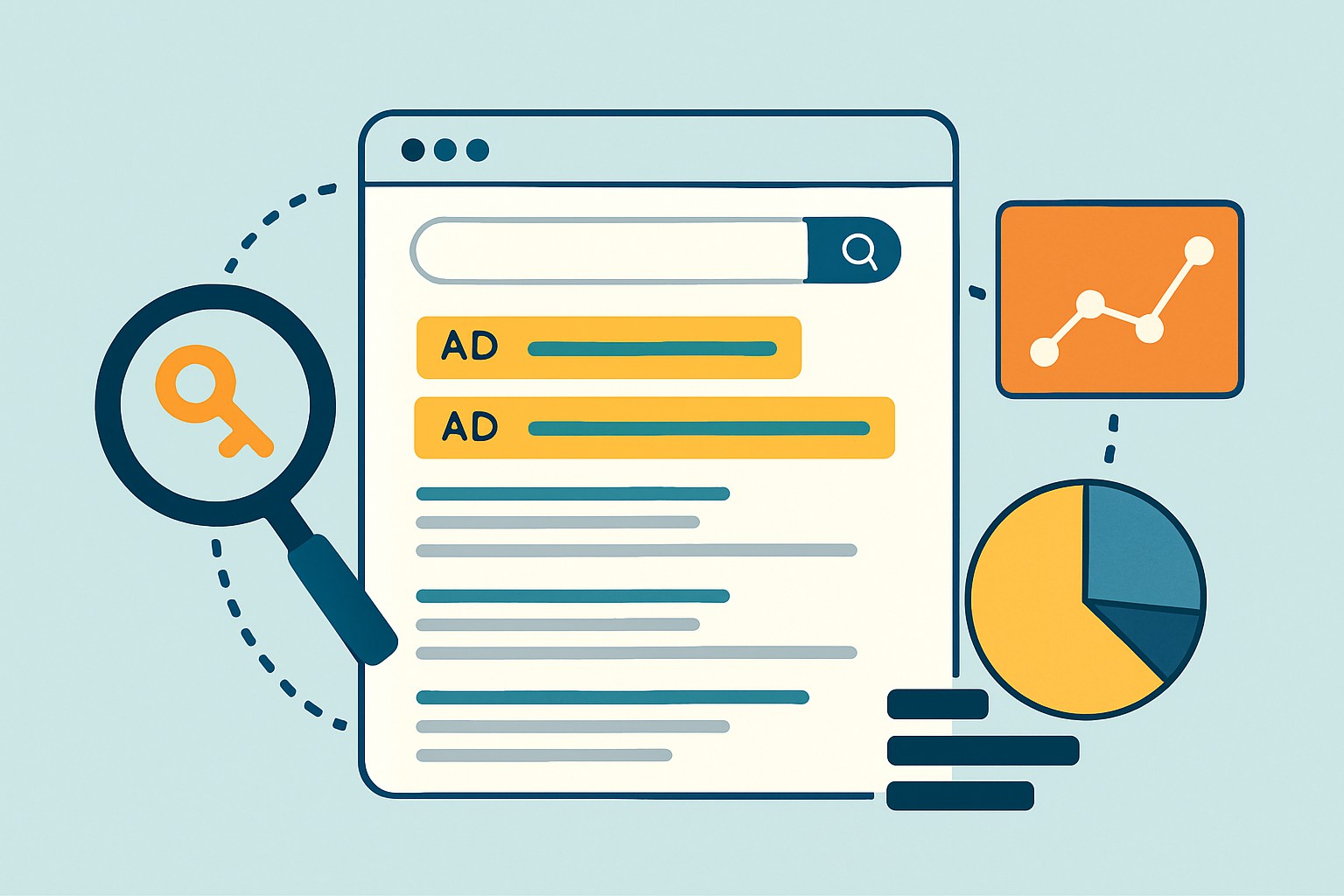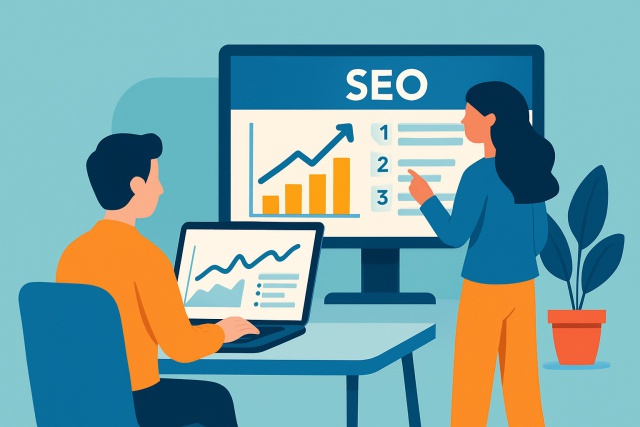
Best Books on SEO for Marketing Professionals
Explore the best books on SEO that equip marketing professionals with practical insights and strateg...

Search Engine Marketing (SEM) and Pay-Per-Click (PPC) advertising are the dynamic duo at the heart of digital marketing, though SEM and PPC often leave newcomers scratching their heads. This article rolls up its sleeves to demystify SEM and PPC by clearly explaining what they are, how they differ and how they actually work in the real world.
Search Engine Marketing or SEM is a digital marketing approach designed to increase a website’s visibility on search engines like Google and Bing. It combines paid advertising with efforts to boost organic search rankings, often called SEO. Picture SEM as a two-pronged game plan. One side uses paid ads to show up quickly in search results, while the other works behind the scenes to improve your site’s natural ranking over time.
Let's dive into the nitty-gritty of SEM. Whether you are a seasoned pro or just dipping your toes in, these elements are the bread and butter of any successful campaign.
These elements smoothly come together in an SEM campaign to hit the bullseye with the right audience and nudge visits into actual sales or leads. A smart bid on carefully researched keywords in paid ads pulls in targeted traffic fast, while SEO quietly works behind the scenes to build lasting organic visibility.
Pay-Per-Click (PPC) advertising is a type of SEM where advertisers pay only when someone clicks their ad. Think of it like setting up your own toll road but charging only the individuals who drive through it. This method helps make sure your marketing dollars go straight toward people who’ve shown genuine interest and often makes it a smarter cost-effective choice compared to other types of ads.
Popular PPC platforms like Google Ads and Bing Ads give advertisers tools to build campaigns, pick keywords, create eye-catching ads and keep a tight rein on budgets. Take an online bakery for example—you might use Google Ads to bid on keywords like "custom cakes" and whip up ads that pop up right when people are searching for those treats.

Google Ads dashboard displaying key metrics and campaign management tools for PPC advertising
Many individuals tend to confuse SEM and PPC, even though PPC is really just one slice of the SEM pie. SEM covers the whole arsenal of tactics that get your name noticed on search engines, including paid ads like PPC and those trusty organic SEO moves. PPC is all about paying each time someone clicks on your ad—kind of like a pay-per-entrance party.
| Aspect | SEM | PPC |
|---|---|---|
| Scope | Covers both paid ads and organic SEO efforts, giving a full-court press on search visibility | Zeroes in on paid ads only, with that familiar pay-per-click price tag everyone knows |
| Cost Structure | Blends the cost of advertising with ongoing SEO work—sort of a one-two punch budget-wise | Advertisers shell out every single time someone clicks on their ad, no exceptions |
| Components | Encompasses paid ads, SEO, keyword research, and those all-important landing pages | Focuses on keyword bidding, smart ad placement, and that elusive quality score that can make or break you |
| Typical Use Cases | Plays a supporting role in an overall strategy aiming for sustainable search visibility over time | Ideal for those quick traffic spikes and lead generation via ads—fast and focused |
| Primary Goals | Targets long-term growth while riding the wave of paid traffic | Zeroes in on specific traffic goals, rapid results, and keeping a tight rein on the budget |
Grasping this difference really helps marketers cook up well-rounded strategies that actually work. SEM often suits businesses aiming to snag quick visibility while still playing the long game with steady organic growth. PPC campaigns shine brightest when speed and laser-focused targeting are the name of the game—especially when you can lean on SEO insights to guide the way.
SEM and PPC often team up seamlessly with other digital marketing channels like SEO and social media and email marketing to pull in targeted traffic and deliver results you can actually measure.
When a retailer rolls out a new product they might focus on SEO to build some organic buzz while running PPC campaigns targeting high-intent keywords. This combo tends to do the trick, offering a quick burst of visibility and laying down the groundwork for a lasting presence.
Succeeding with SEM and PPC usually calls for careful planning and keeping a close eye on performance. It also requires making ongoing tweaks to your campaigns.
It’s the foundation that often gets overlooked but makes all the difference.
Craft ad copy that clearly shines a spotlight on the main benefits and ends with a strong call-to-action that gently nudges people to click without sounding pushy.
Make sure your landing pages load quickly, are easy to understand and designed to convert visitors into customers like a pro.
Keep a close eye on campaign data and metrics like a hawk to spot what’s working and where there’s room for improvement.
This keeps costs in check while steadily boosting your ROI, a slow and steady game worth playing.
Each step plays a vital role in fine-tuning your campaign for better efficiency. Take keyword research for instance when done right, it reels in the audience that actually matters. And optimizing those landing pages is what turns casual visitors into loyal customers, not just passing clicks.
SEM and PPC often run into familiar headaches like fierce keyword battles and tight budgets that never seem to stretch far enough. They also face pesky click fraud and common disappointingly low click-through or conversion rates.
Mastering SEM and PPC often feels a bit like trying to navigate a winding river. You need patience, a knack for rolling with the punches, and a willingness to learn from every twist and turn along the way. Keeping your eye on the data and sticking with it usually transforms those obstacles into stepping stones for real growth.
Measuring success in SEM and PPC really comes down to keeping a close eye on key metrics like click-through rate (CTR), cost-per-click (CPC) and quality score. It also includes conversion rate and return on investment (ROI).
| Metric | Definition | Why It Matters | How to Improve |
|---|---|---|---|
| Click-Through Rate (CTR) | The share of people who actually click your ad after spotting it | A good pulse check on how relevant and engaging your ad really is | Write clear, catchy copy and zero in on the right keywords |
| Cost-Per-Click (CPC) | The amount you shell out every time someone clicks your ad | Helps keep your budget in check and ensures your campaign doesn’t break the bank | Hone your targeting and work on boosting your quality score |
| Quality Score | How your ad stacks up based on relevance, landing page experience, and CTR | A key player in deciding where your ad shows up and how much you pay | Polish your ad text, fine-tune targeting, and spruce up landing pages |
| Conversion Rate | The slice of clicks that lead to a desired action, like a sale or signup | Shows how well your campaign turns interest into actual results | Make your landing pages more inviting and beef up your calls to action |
| Return on Investment (ROI) | The cash you bring in compared to what you put into ads | The ultimate gauge of whether your campaigns are truly paying off | Keep a close eye on sales and double down on the ads that deliver the goods |
Keeping a close eye on these metrics for your SEM and PPC campaigns on the regular helps marketers tweak their strategies and budgets with real, hard data—no guesswork involved—so campaign performance stays on the right track.
14 articles published
Driven by a passion for ethical marketing, Garrett Meadowlark has transformed the field with his unconventional yet highly effective methods that prioritize authenticity and transparency.
Read Pages
Explore the best books on SEO that equip marketing professionals with practical insights and strateg...

Explore detailed insights into SEO costs for small businesses, helping you budget wisely and choose...

Discover actionable outreach strategies designed to help you attract more SEO clients. Follow this p...

Discover essential SEO project management tools that help organize your team, streamline workflows,...